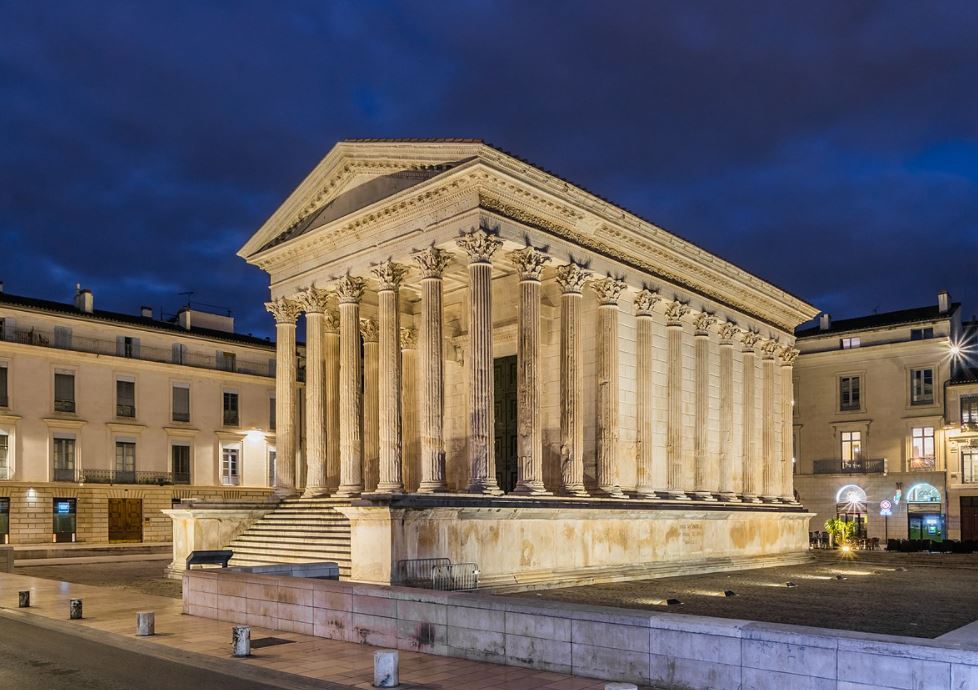Modern-day Italy is full of ancient Roman structures, including several Roman Amphitheaters. Together with Roman Bathhouses, these structures served as the main entertainment venues of the Roman world.
Italy isn’t the only place where you can find these ancient buildings, though, because the Roman Empire extended into North Africa in the south and Western Asia in the east. One of the best-preserved of all amphitheaters can be found in a city in southern France.
Let’s take a closer look at some of the most interesting facts about the Arena of Nîmes, an ancient building that is nearly 2,000 years old and that is still used for events today (albeit quite different ones than in Roman times).
1. It’s located in the heart of the most Roman city outside of Italy
When a city is dubbed the French Rome, then you can be sure to find plenty of ancient Roman monuments here. The Arena of Nîmes is the most spectacular of them all and is located right in the heart of the city.
Nîmes is located in southern France, approximately between the major cities of Montpellier to the west and Marseille to the east. It has a population of almost 150,000 inhabitants which is about 3 times the number of people who lived here in Roman times.
The city grew because it was located along the Via Domitia which connected Italy with the Roman province of Hispania. It was referred to as Colonia Nemausus and the Nîmes Aqueduct, which features the amazing Pont du Gard, provided the city with water for multiple centuries.
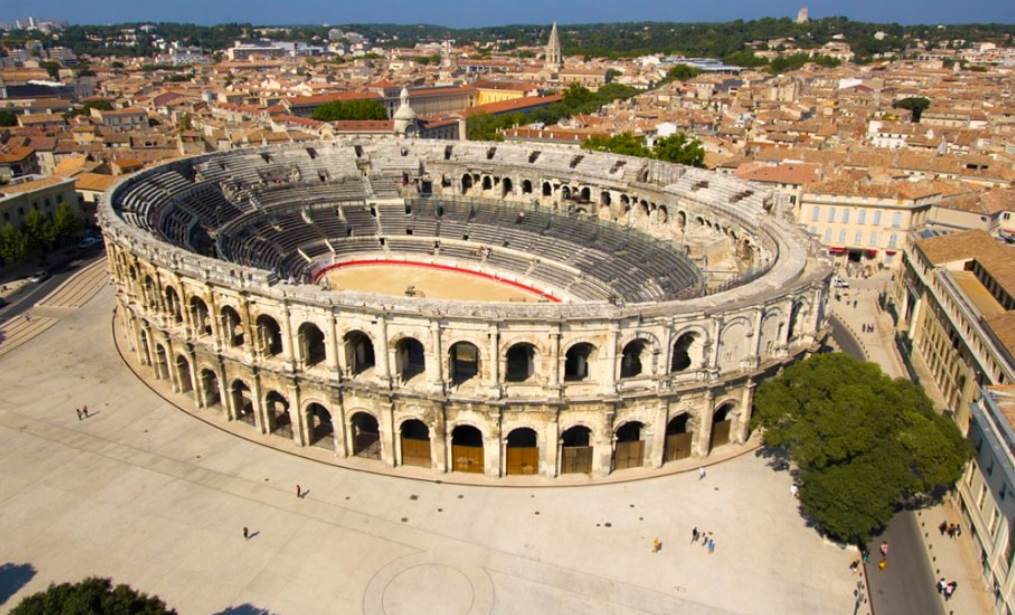
2. The amphitheater was completed before the Colosseum in Rome
The town probably already existed when Augustus seized power in 27 B.C., effectively establishing the Roman Empire. After all, the Romans already conquered the area from Gallic tribes in the 2nd century B.C. and the Roman province of Gallia Transalpina was founded in 121 B.C.
Colonia Nemausus was nothing more than a small village back then because many buildings were erected when Augustus came to power. His building spree transformed the Roman Empire and heavily urbanized it.
The Arena of Nîmes was completed around 70 B.C. This was the time that the construction of the Colosseum in Rome began. This means that it precedes the largest Roman Amphitheater ever constructed.
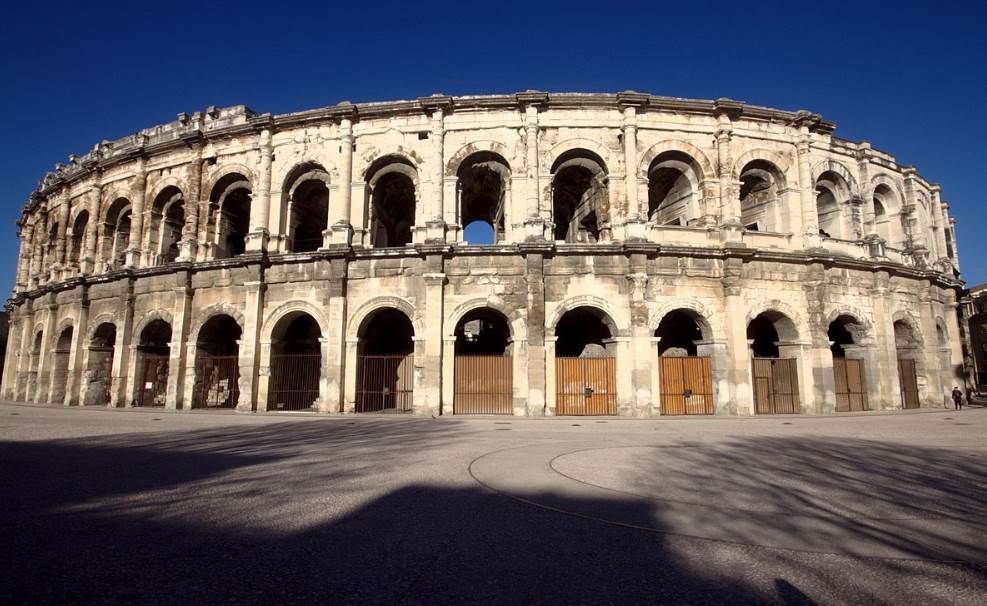
3. It was one of the biggest arenas ever constructed in ancient Rome
The fact that it was completed in the 1st century makes it all the more impressive that the Arena of Nîmes could seat approximately 24,000 spectators. These could then enjoy games such as gladiator fights and beast hunts, popular forms of entertainment in the Roman Empire.
The arena is much bigger than it initially appears to be because the entire complex has a length of 133 meters (436 feet) and a width of 101 meters (360 feet).
The arena floor itself has dimensions of 68 by 38 meters (223 by 124 feet). The terraces feature 34 tiers and were divided into 4 different sections featuring balconies. These zones were referred to as “maeniana.”
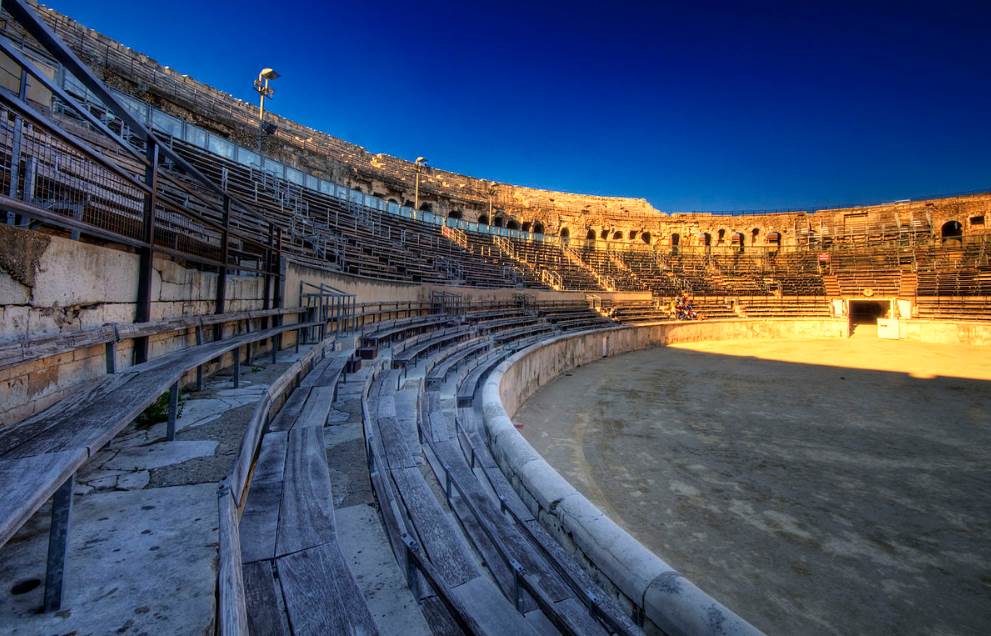
4. The building once served as part of the defensive walls of Nîmes
The Roman city was captured by the Visigoths in the year 472, shortly before the Fall of the Western Roman Empire in 476. It had already lost a lot of its earlier glory by then and the nearby city of Arles became more prosperous between the 3rd and 5th centuries.
The city was briefly occupied by Muslims in the 8th century but was quickly recaptured by the Franks in 754. The arena and other Roman structures in the city hadn’t been used for multiple centuries already by then.
Unlike some other Roman amphitheaters, the Arena of Nîmes was simply repurposed throughout the Middle Ages. A city wall was constructed in the late 12th century and the arena was incorporated into this defensive structure.
When the defensive value of the building was diminishing over the centuries, the arena became a residential area. Houses were constructed within the arena and hundreds of people once lived here. These were all demolished and cleared in the late 18th century.
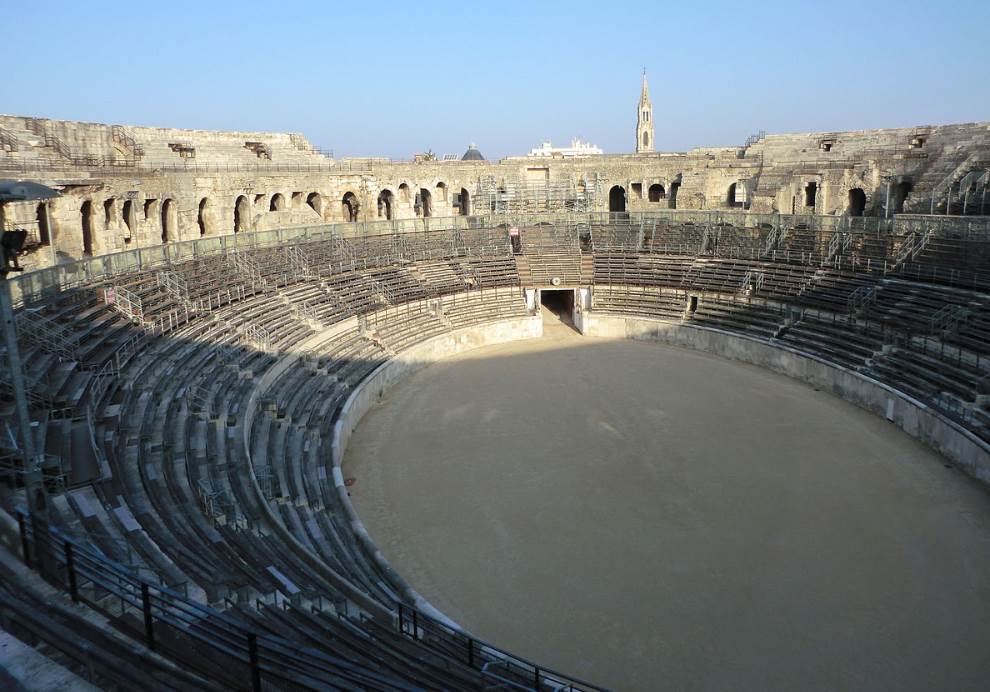
5. The arena is still used for a variety of things today, including concerts
The residences inside and around the arena were cleared and a renovation project was launched halfway through the 19th century. This returned the building to its former glory.
The idea was to restore this ancient monument in such a way that it could serve as both a tourist attraction and as a venue for modern-day events.
Ever since the restoration project was completed, a wide variety of events have taken place here. Some of these include two annual bullfights (which started back in 1853), sporting events, concerts, and an annual music festival.
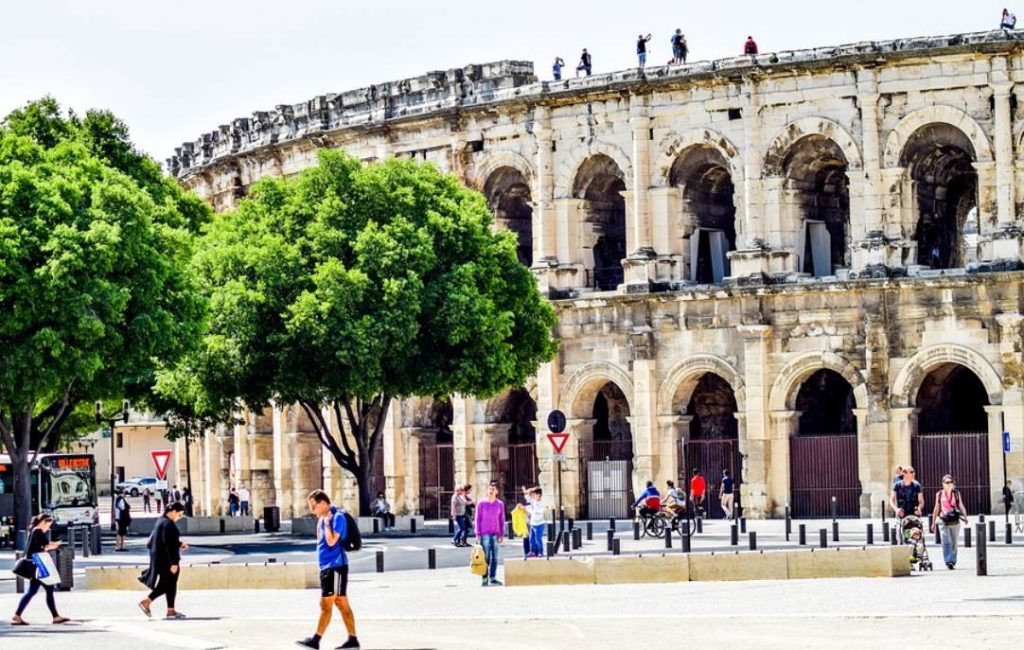
More interesting facts about the Arena of Nîmes
6. The terraces of the arena featured 4 different sections which were separated by balconies. The higher you sat, the lower your class as in Roman society. This was common in just about every other amphitheater constructed in ancient Rome.
7. The current capacity of the arena has been drastically reduced since ancient times. The 24,000 people who watched games here nearly 2 millennia ago were crammed into their seats like sardines in a can.
Today, the comfort level inside the arena is tremendously better as the capacity today is just 13,700 spectators.
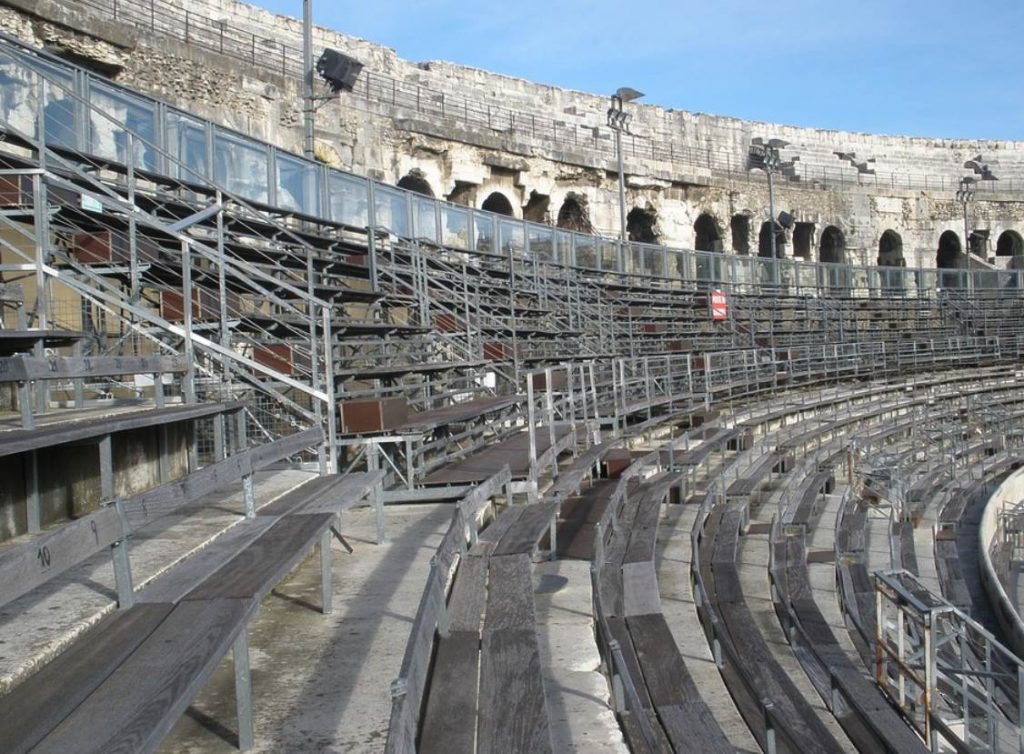
8. The arena is used for two annual bullfights during the so-called Feria de Nîmes, an annual festival in the city. Just outside of the arena you can find a statue of a French matador named Nimeño II (1954-1991).
His story is a tragic one as he was hit by a bull in Arles. He landed on his head, an accident that left him partially paralyzed. He eventually committed suicide on November 25, 1991, after months of recovering.
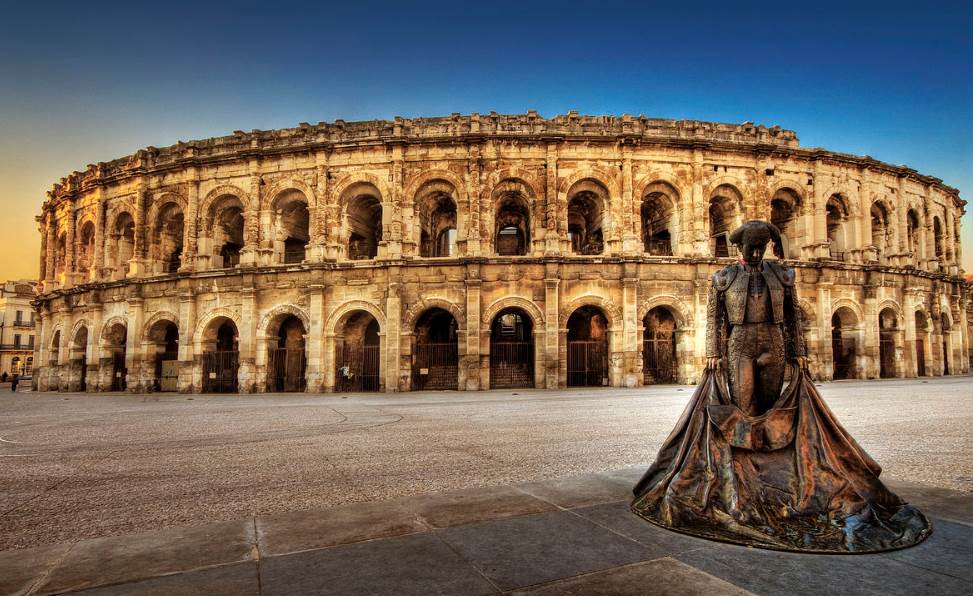
9. The arena has been extremely well-preserved, something reflected in the architectural details of the structure. The outer façade has a height of 21 meters (69 feet) and features two stories of 60 arches.
The corridors inside the structure are amazing as well, considering that these are nearly 2,000 years old.
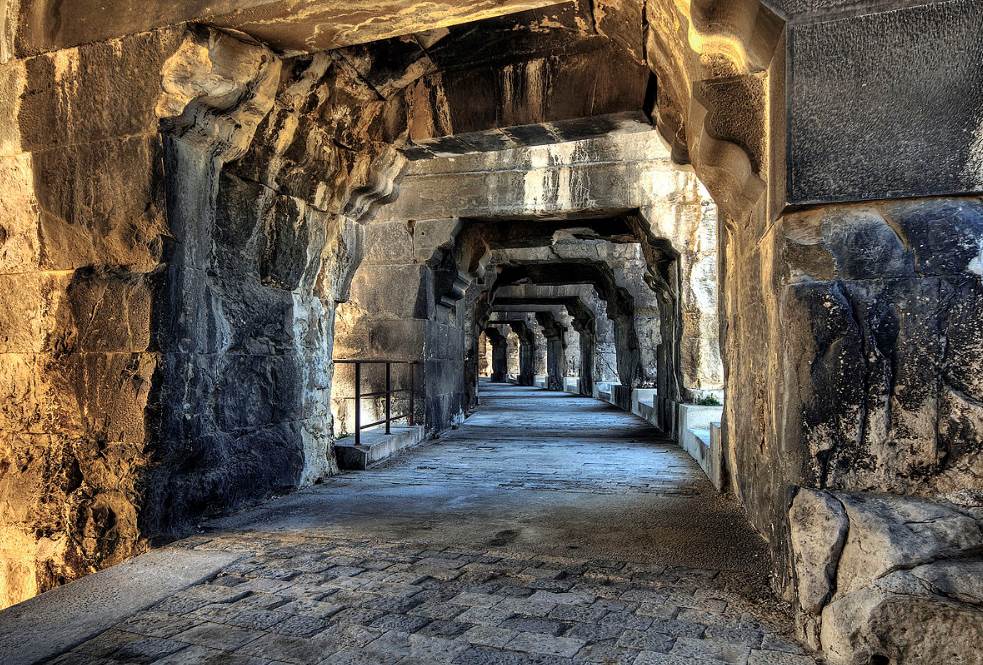
10. Although the Arena of Nîmes is the most amazing ancient Roman monument in the city, you can find plenty of other ancient structures here. Many of them have been remarkably well preserved.
The foundations of the ancient Roman city wall are still visible and the Temple of Diana and the Augustan Gate of the city still stand today. The most amazing monument is the so-called “Maison Carrée,” one of the best-preserved ancient Roman temples in the world.
